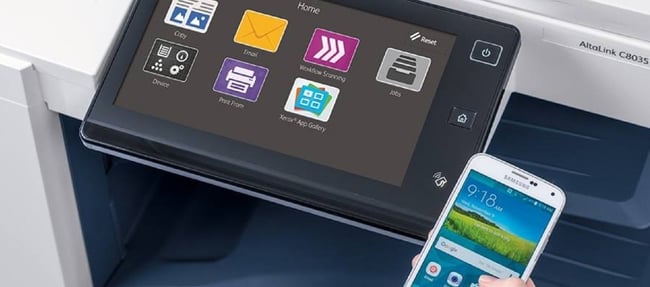The introduction of digital printing had an incredible effect on every industry, but it’s nothing compared to what the future holds.
Over the next few years, the way we think about printing will change considerably, with 3D structural printing, digital graphics printing and functional printing set to transform on-demand manufacturing, smart packaging and many other areas.

Scalable structural printing
The current state of 3D printing offers only a hint at what’s to come. Today, we can create prototypes and low-volume products, but in the near future, we’ll see advances that enable high-speed printing of metals, plastics and composites.
For instance, the artificial implants that can be created with today’s 3D printing technology will be available at much greater scale and to far more patients. The same goes for production parts, which will benefit from advancements in weight, design and material properties that offer significant cost savings over traditional manufacturing processes.
Supply chains are likely to benefit, too. Rather than sending parts to be made in factories, structural printing will enable them to instead be made in-house and on-demand. This will reduce the manufacturing steps and make changes to the production line far simpler to implement.
Flexible digital print
There’s no doubt that digital print will continue to advance rapidly with new ink and toners that increase image quality and enable specialised effects, but it doesn’t stop there.
It won’t be long before we can digitally print on packaging, boxes and other objects. Print customers will consequently get more value, and late stage customisation, personalisation and shelf-ready displays will be far easier to undertake.
On-demand personalised printing on products in store? It’s a reality that isn’t as far off as you might think!
Intelligent functional printing
Active functional inks play a role in printing today, enabling colour and the structure of prints to change based on environmental factors such as temperature.
However, it’s the early prototypes of printed electronics that provide a glimpse into the future of functional printing. We’re moving to an age where we’ll have access to software that simplifies digital manufacturing by producing circuits, sensors and communications that power low-cost smart tags and enable them to be printed directly onto packaging and products.
This intelligent form of functional printing will radically enhance cold chain logistics and even environmental monitoring, connecting both the digital and physical worlds. Printed materials will also give providers access to analytics that make outcome-based pricing models a reality.
The future of Managed Print Services
Managed Print Services (MPS) help businesses understand the usage of their print infrastructure and identify opportunities for optimisation. As time draws on, MPS will continue to be an enabler for digital transformation.
Analytics is a perfect example of this; in the near future, analytics will be a key component of strategic business reviews for organisations of all sizes and will drive down costs and raise efficiencies.
The insights we can all gain from MPS will only increase in value, with user, device, process and document analytics providing not only diagnostics, but also descriptive, prescriptive and - most importantly - predictive insight.
A look into the future...
2025 is earmarked by many in the printing industry as the year by which the above printing technologies are likely to become mainstream, driving sweeping changes across countless industries.
Some advancements might feel a lifetime away now, but we’re already seeing the green shoots of an incredibly exciting future for print.
The information in this blog is based on two recent posts from Xerox: 1) Print 2025: Making the World a Smarter Place 2) Quocirca Print 2025

